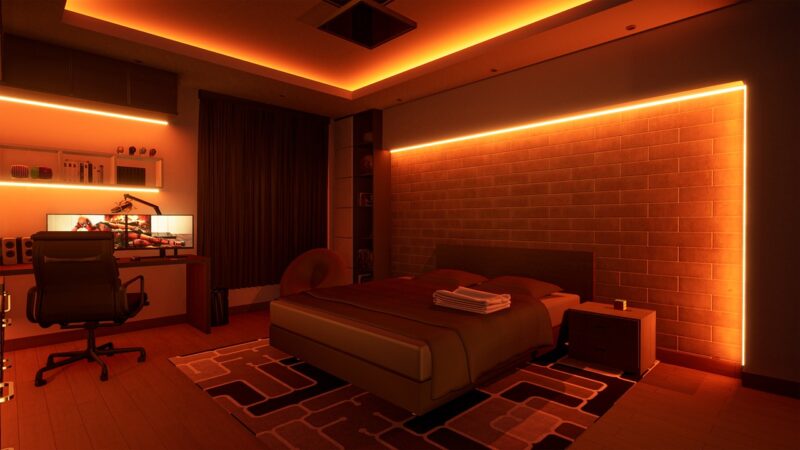The Ultimate Guide to Setting Up Dual Monitors for Gaming and Streaming
November 10, 2024

In the world of gaming and streaming, having the right setup can make all the difference. One of the most popular enhancements to a gaming or streaming setup is the addition of dual monitors. Two screens can significantly improve your experience by increasing productivity, providing more screen real estate, and allowing for seamless multitasking. This guide will walk you through everything you need to know about setting up dual monitors for gaming and streaming.
1. Why Choose Dual Monitors?
Before diving into the setup, let’s explore why dual monitors are advantageous for gamers and streamers.
- Enhanced immersive experience: With dual monitors, you can have your game on one screen while keeping your streaming software, chat, and social media open on another, allowing for an immersive and uninterrupted experience.
- Multitasking efficiency: You can easily switch between your game and other applications, making it easier to manage your streams, interact with your audience, or research game strategies while playing.
- Improved organization: You can dedicate screens to different functions, which keeps your workspace organized and reduces clutter on a single screen.
With these advantages, setting up dual monitors can elevate your gaming and streaming experience.
2. What You Need for a Dual Monitor Setup
To maximize your dual monitor setup, you’ll need a few key components:
- Monitors: Choose monitors that suit your gaming style and preferences. It’s best to select monitors of the same size and resolution for seamless transitions between screens. Look for specs like refresh rates and response times that match your gaming needs.
- Graphics Card: Ensure your graphics card can support multiple monitors. Most modern GPUs allow for dual monitor setups, but double-check specifications before purchasing additional displays.
- Cables and Adapters: Depending on your monitor and GPU outputs, you may need HDMI, DisplayPort, or DVI cables. Additionally, ensure you have the correct adapters if your ports don’t match.
- Monitor Stand or Mounts: Investing in a dual monitor stand or mount can save space, provide better ergonomics, and improve the aesthetics of your setup. Look for adjustable stands for greater flexibility.
- Software: Some software might be required to manage dual monitors effectively, especially for capturing and streaming content or for window management utilities.
Ensuring that you have these components before you start setting up will help streamline the process.
3. Steps to Set Up Your Dual Monitors
Setting up dual monitors is a straightforward process. Follow these steps to get started:
Step 1: Connect the Monitors
– Connect each monitor to your PC using the appropriate cables.
– Make sure the monitors are powered on and recognized by the operating system.
Step 2: Configure Display Settings
– On Windows, right-click on the desktop and select “Display settings.” You should see both monitors represented in a diagram.
– Set the arrangement of your displays by dragging them to match their physical placement. Ensure that “Extend these displays” is selected to use both as a single workspace.
– Adjust the resolution and orientation as needed for each monitor for optimal viewing.
Step 3: Set Up for Gaming/Streaming
– Open your gaming software and drag it onto one of the screens, while keeping your streaming software on the other monitor.
– Organize your streaming overlays, chat, and alerts on one monitor for easy access while gaming.
Step 4: Optimize for Performance
– Adjust graphics settings in your games to ensure smooth performance across both monitors.
– Monitor the performance while gaming to assess if your FPS drops or stuttering occurs, and make necessary adjustments to software settings as needed.
By completing these steps, you’ll have a seamless dual monitor setup ready for both gaming and streaming.
4. Tips for Enhancing Your Dual Monitor Experience
To get the most out of your dual monitor setup, consider the following tips:
- Adjust your settings: Customize display settings based on personal preference, such as brightness, color calibration, and scaling options for both monitors to ensure clarity and comfort.
- Utilize window management tools: Download window management software like DisplayFusion or Microsoft PowerToys to manage windows efficiently across your screens.
- Keyboard shortcuts: Learn keyboard shortcuts to quickly switch between screens, maximizing efficiency when multitasking while gaming or streaming.
- Personalize the layout: Tailor your monitor layout based on your streaming games, chat preferences, and performance optimization for a user-friendly interface.
Taking these steps can help you achieve a more enjoyable and productive gaming experience.
5. Conclusion
Setting up dual monitors can be transformative for gamers and streamers, providing enhanced functionality and immersive experiences. By following this guide, you can connect and arrange your dual displays, optimize settings, and implement tips for performance improvements. Don’t hesitate to tailor your dual monitor situation according to your personal needs, ensuring the best possible experience for both gaming and streaming. With the right setup, you can maximize productivity and enjoy your favorite games and content like never before!







